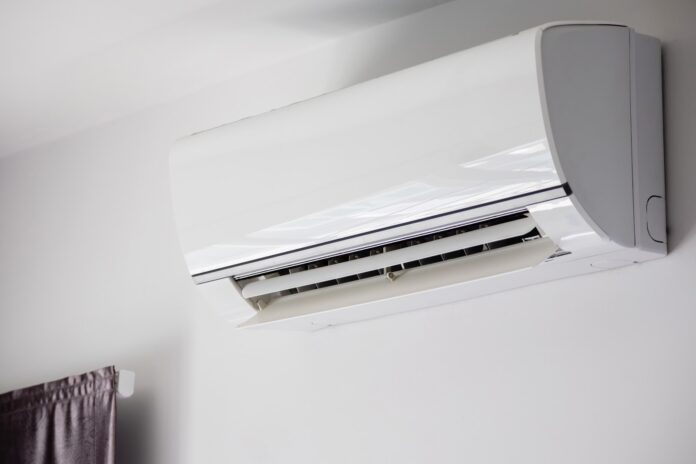Australia’s climate varies significantly, from the tropical regions in the north to temperate zones in the south. Managing indoor temperatures effectively has always been crucial, especially during the sweltering summer months. This necessity led to Australia’s widespread adoption and evolution of air conditioning technology. The country’s air conditioning journey reflects technological advancements, changing consumer preferences, and growing need for energy efficiency.
Early Beginnings of Air Conditioning
The history of air conditioner in Australia dates back to the early 20th century. Initially, cooling methods were rudimentary, relying on natural ventilation and mechanical fans. However, the development of modern air conditioning systems began to take shape in the 1950s. These early systems were primarily used in commercial buildings, such as cinemas and department stores, to comfort patrons and workers.
During this period, air conditioning units were large, noisy, and expensive, making them inaccessible to the average household. The high installation and maintenance cost limited their use to public spaces and affluent homes. Despite these limitations, the demand for air conditioning grew steadily, driven by the country’s increasing urbanisation and the desire for improved living standards.
Technological Advancements and Increased Accessibility
The 1960s and 1970s marked significant advancements in air conditioning technology. Compressor and refrigerant technology innovations made units smaller, quieter, and more energy-efficient. These improvements reduced the cost of production and operation, making air conditioning more accessible to the general public. By the late 1970s, air conditioning had become common in many Australian homes and offices.
Split-system air conditioners, introduced during this era, revolutionised the market. These units separated the condenser and evaporator components, allowing for more flexible installation options and improved aesthetics. The split-system design also contributed to better energy efficiency and quieter operation, enhancing their popularity.
Energy Efficiency and Environmental Concerns
The 1980s and 1990s saw the growing awareness of the environmental issues and the need for energy-efficient appliances. Air conditioning manufacturers responded by developing systems that used less electricity and environmentally friendly refrigerants. The introduction of inverter technology was a significant breakthrough during this period. Inverter air conditioners adjust the compressor speed based on the cooling demand, resulting in significant energy savings and more consistent indoor temperatures.
Government regulations and incentives also played a crucial role in promoting energy-efficient air conditioning systems. Implementing energy rating labels helps consumers make informed choices, encouraging the adoption of more efficient models. These measures reduced energy consumption and contributed to lower greenhouse gas emissions.
Smart Air Conditioning and Modern Innovations
In recent years, the integration of innovative technology has transformed air conditioning systems in Australia. Air conditioners can be controlled remotely via smartphones and connected to home automation systems. This connectivity allows for greater convenience, enabling users to adjust settings, monitor energy usage, and schedule operations from anywhere.
Advanced features such as motion sensors, air quality monitoring, and self-cleaning functions have further enhanced the functionality and performance of air conditioners. These innovations provide improved comfort, better indoor air quality, and reduced maintenance requirements. Developing more compact and stylish units has also made air conditioning a seamless part of modern interior design.
Challenges and Future Trends
Despite the advancements in air conditioning technology, challenges remain. One of the primary concerns is the increasing energy demand associated with widespread air conditioner use. As temperatures continue to rise due to climate change, the reliance on air conditioning is expected to grow, potentially straining the energy grid.
To address this issue, the focus is shifting towards developing even more energy-efficient systems and promoting alternative cooling methods. Solar-powered air conditioners and hybrid systems that combine cooling with renewable energy sources are gaining traction. These innovations aim to reduce the environmental impact of air conditioning while providing adequate cooling solutions.
Another emerging trend is using artificial intelligence (AI) and machine learning to optimise air conditioner performance. AI algorithms can automatically analyse usage patterns and environmental conditions to adjust settings, maximising efficiency and comfort. Integrating AI with smart home ecosystems is expected to enhance the capabilities of air conditioning systems further.
Impact on Australian Lifestyles
Air conditioning has had a profound impact on Australian lifestyles. It has transformed people’s lives, work, and socialisation, particularly in extreme-estimate regions. Maintaining comfortable indoor environments has improved workplace productivity, enhanced learning conditions in schools, and provided relief in homes during heatwaves.
Air conditioning has contributed to the growth of various industries, including tourism and hospitality. Comfortable indoor climates attract tourists and support the operation of hotels, restaurants, and entertainment venues. The health sector has also benefited, as air conditioning helps maintain optimal conditions in hospitals and clinics, ensuring the well-being of patients and staff.
The evolution of air conditioner in Australiais a testament to technological progress and the country’s adaptability to changing needs. From the early days of bulky, expensive units to the modern era of intelligent, energy-efficient systems, air conditioning has become an integral part of Australian life. As demand for cooling solutions continues to rise, ongoing innovation and a focus on sustainability will be important in meeting future challenges and ensuring a comfortable, energy-efficient future for all.


